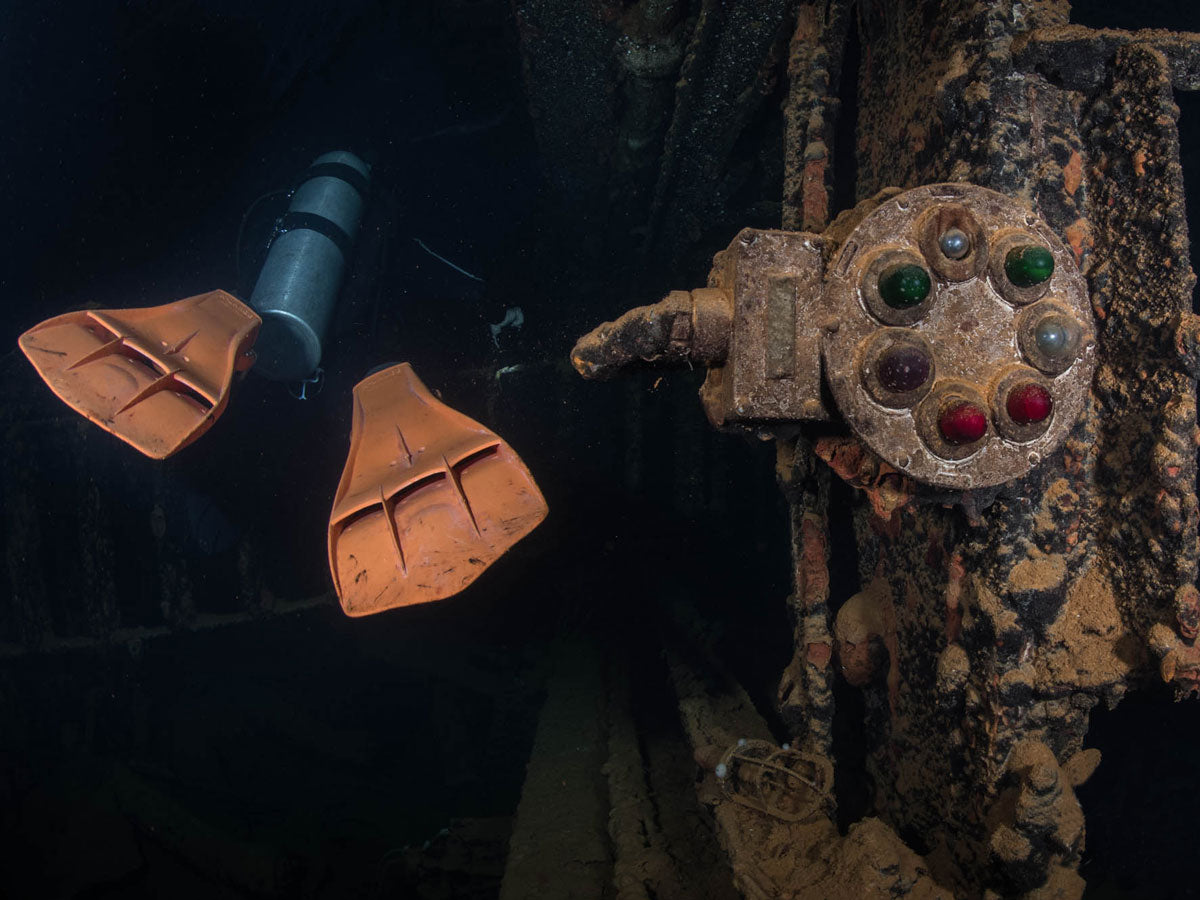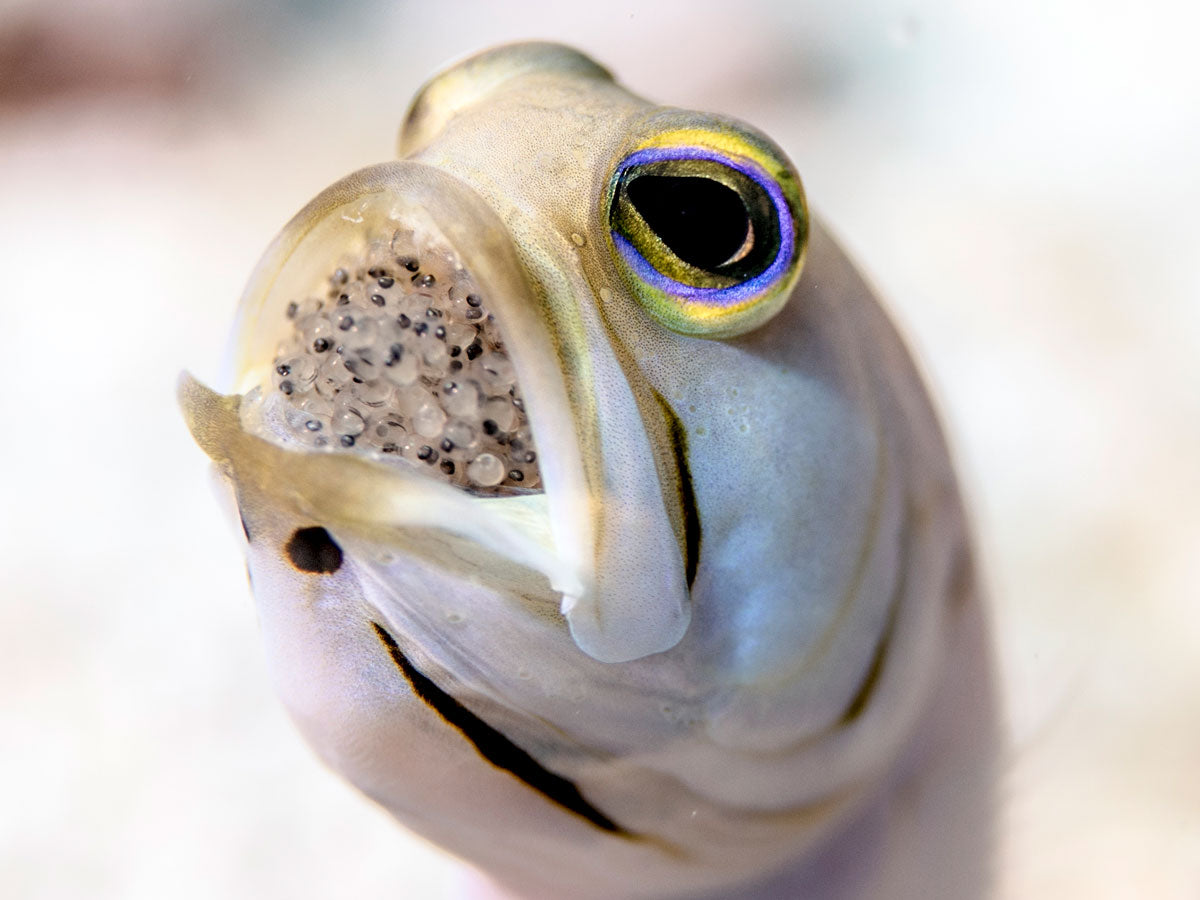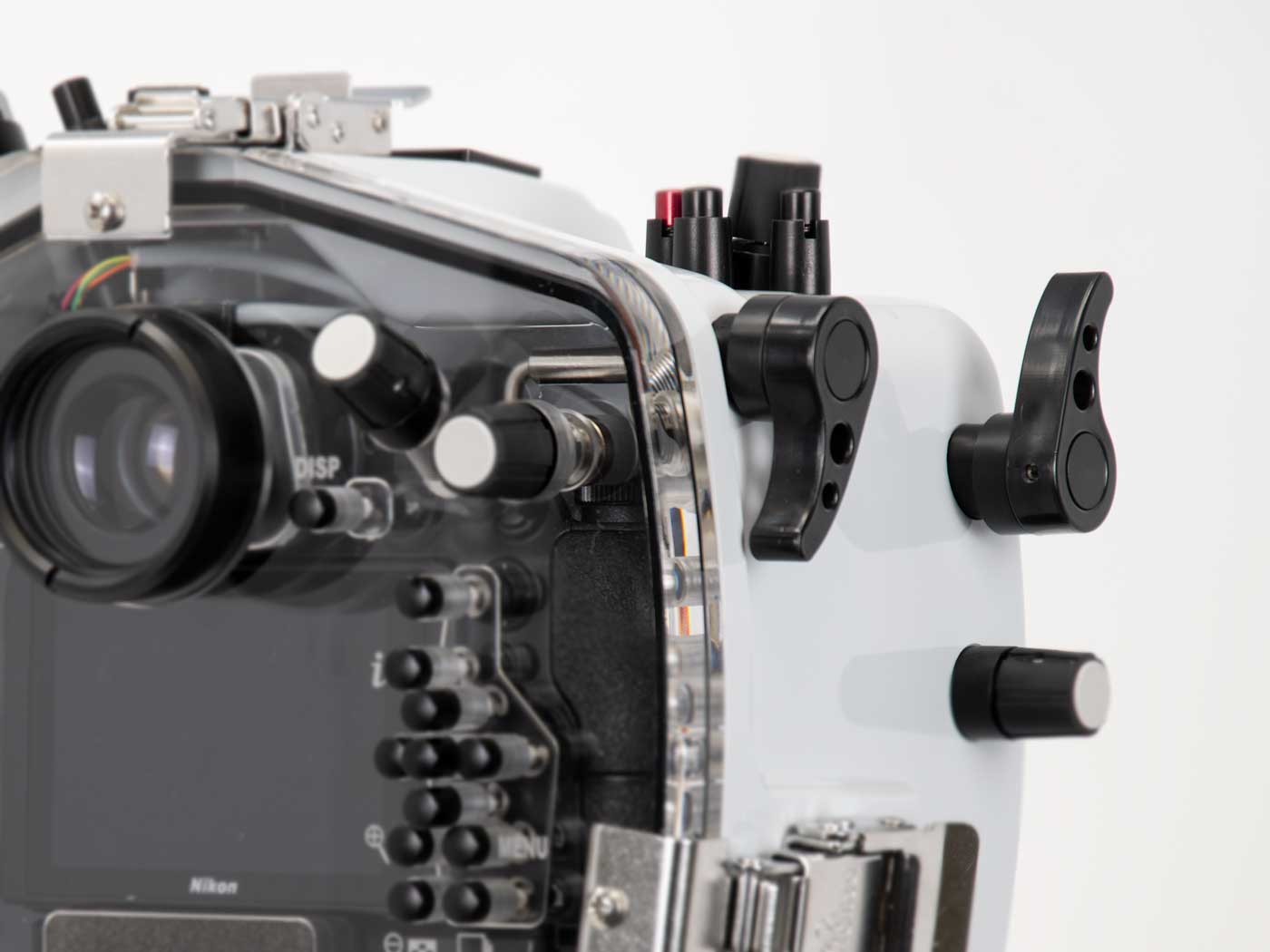By Ambassador Brandi Mueller
Photographing wrecks can lead to amazing and creative images that encompass the feeling of visiting something that was not meant to be underwater. Be it a warship sunk in battle or a ship at the end of its days cleaned up and sent to the depths on purpose to have a second life as an artificial reef. Here are some tips on getting the best shots when shooting wrecks.
Where
Wrecks can be found around the world and almost every diving location has at least one or two. Some hot spots for wreck include:
- Chuuk, Micronesia (Truk Lagoon): Over 50 Japanese ships went down during Operation Hailstone in 1944.
- North Carolina: also called the Graveyard of the Atlantic, which has hundreds of shipwrecks sunk for many reasons including pirates, the Civil War, World Wars, hurricanes, storms and other maritime mistakes, and for artificial reefs.
- Florida Keys: Artificially sunk wrecks like the Spiegel Grove and the Vandenberg and many others not sunk on purpose.
- So many more – The Great Lakes; Scapa Flow; Coron, Philippines; Solomon Islands; Oahu, Hawaii; the Red Sea; the list goes on and on.

Marine life flourishes inside of the U.S.S. Tucker off the coast of Vanuatu. Most wrecks eventually become artificial reefs full of activity. You could easily do several dives with a macro lens focusing on the small fish life tucked into the thousands of crooks and crannies on a wreck.
Equipment: Lenses and Domes
Wreck photographers will usually find themselves shooting wide-angle and the pros often argue about which is better – fisheye or rectilinear. My answer is to have them both as they have different advantages. Fisheyes are great underwater because there are few straight lines in the ocean, so the fisheye distortion effect is not seen as severely as on land. However, with wrecks, these man-made objects have straight lines and it’s easy to see in fisheye wreck photos that the image is distorted. That being said, for close-focus-wide-angle (CFWA) shots, fisheyes are best for focusing at close distances and getting the CFWA shot. Rectilinear lenses won’t distort straight lines in wrecks, but they are limiting in how close you can get to a subject in a wreck.

Marine life growing on metal beams of the Yamagiri Maru in Truk Lagoon. Straight lines like the beams of a ship can get distorted when using a fisheye lens underwater.
Large domes produce the best images overall but I have found Ikelite’s compact dome does a fantastic job too (with only occasionally a little vignetting or pulling at the very edges of the photos). I find the compact dome great for shooting inside wrecks in very tight areas. It allows me to be very close to a subject and still focus to get CFWA shots (and sometimes there is no place in a tight spot in a wreck to move further away.)
Don’t leave your macro lens at home either. Most wrecks have become fantastic artificial reefs packed with marine life. All sorts of macro critters can call wrecks home, such as nudibranchs, juvenile fish, corals, and other critters.

A diver and a school of spadefish swim over the Portland wreck off the coast of North Carolina, USA. Capturing marine life together with the wreck highlights the beautiful relationship that develops between these natural and foreign bodies.
Composition
Wrecks have a lot of photographic potential from wide-angle shots capturing the expanse of a wreck to shooting the macro life living on a wreck. Try to take different types of images, some large scale and some of, for example, smaller parts of a wreck like just a gun, or the bow or stern. Things like propellers make for great images as well as steering stations in the bridge.
As marine life grows on wrecks some objects can be hard to identify, so take photos of things that still resemble what they used to be, but also take photos of the things that have changed, such as coral growing on the gun of a warship or a fish living in a bottle in a cargo hold. Also pay attention to the marine life now living in or around the ship. Take images showing these amazing relationships such as a school of fish over a shipwreck.
Popular wrecks that have been dived by many people and photographers often have iconic objects or items that have been photographed many times. I think it’s important to take these same images and “get the shot,” but then try to get creative and come up with ways to take the same image differently. Also look around, is there something just as neat that everyone else passes by? Do something different with your lighting, etc.

This air compressor in the Fujikawa Maru - nicknamed R2D2 - has become an iconic shot in Truk Lagoon. Shooting straight into its "eyes" is the classic image that most photographers come away with. Shooting down at a three-quarter angle gives R2D2 an almost pensive look.
Wrecks that ended up underwater during war or accidentally often have artifacts and objects showing what was happening at that moment, on the ship; freezing it in time. Taking photos of these items can help tell a story of the ship through images. For example, the warships in Truk Lagoon, which have been underwater for 75 years, have become underwater museums. The artifacts within can be photographed as historical references, showing a time in history, albeit underwater.

A telegraph on board the Fujikawa Maru in Truk Lagoon. This is probably the most famous wreck in Truk - a 450 foot long cargo ship that's still largely intact. She was converted for military use as an aircraft ferry and sank with a cargo hold full of Zero fighter planes.
Having negative space in an image, like blue water, can also show scale. Sun bursts can be just as exciting on wrecks as they are on reefs. Having a sunburst behind a wreck or behind a part of a wreck can make an image more interesting.
Don’t forget to add divers. Having a diver such as a silhouette swimming above a wreck can help show scale. Have a diver in an image looking at something like an artifact can help views to know what they are supposed to focus on. Divers can also help show what goes into a particular dive, such as showing a rebreather diver or a diver carrying multiple tanks can imply that the wreck is deep and requires a lot to get to see.

A diver shows engraving on a diagram in the engine room of the Heian Maru, Truk Lagoon. The Heian Maru was built in 1930 as a luxury liner then converted to a Navy submarine tender in 1941. It is the largest ship remaining in Truk Lagoon with a number of naval artifacts on board including torpedo bodies and periscopes.
Lighting
The opportunities for creative lighting for wreck photography are endless (and not always easy.) Wrecks can be massive and to capture the size you may have to be so far away from the wreck that shooting with ambient light is the only option. When wrecks and deep or natural light/visibility are poor, increasing ISO can help. Shooting at an open aperture or slow shutter speed can help too, but be careful not to slow the shutter so much that blur occurs. Also know how much you can increase the ISO on your specific camera model before the photo quality is reduced. Converting to black and white in post-processing often works for wrecks and can help salvage images in dark conditions.

When trying to capture the scale of a wreck, you're often shooting in low light environments at greater distances. The resulting image can end up very blue (or green) and washed out. Converting to black and white can add impact to the image.
Shooting inside wrecks can be difficult if there is a lot of silt or particles in the water. Getting your strobes as far away from the port as possible and angling can help reduce backscatter. Sometimes it is also necessary to reduce the power of your strobes in tight spaces. It also helps to be one of the first people inside the wreck as diver’s bubbles can cause silt to rain down or accident fin kicks can stir up a space.
Ikelite TTL is fantastic for all sorts of wreck images because it chooses the perfect power for a clean exposure. You may be outside the wreck one second and then inside the next and how much light you need for the perfect exposure is completely different, but TTL will nail both shots.
Off-camera lighting can create exceptional wreck photos. This can be done by setting up powerful lights or using slave triggered strobes.
Get Creative
Like with all photography, take the rules and break them. Take the techniques of others and add your own personal touch to create something different. All sorts of things we say not to do in underwater photography can work in wreck such as, “Don’t shoot down,” often wrecks look interesting looking directly down on them or even, “Get as close as possible,” where sometimes you need to back away from a wreck to show what the viewer is actually looking at. Don’t be afraid to try different things.

A sand tiger shark swimming over a wreck off the coast of North Carolina, USA. Don't be afraid to break rules like "never shoot down." In this case the straight down perspective actually adds depth to the photo and gives it an eerie air.
Safety
Wreck diving has the potential to have more risk. Never dive a wreck without first finding out as much information about potential hazards or doing a dive with a knowledgeable guide. Find out about things like unexploded ordinance, possible collapsing areas, or places where entanglement can occur. Never go inside a wreck without proper training, equipment, and knowledge about what is inside. Some wrecks are at depths beyond recreation depth limits. Only dive to your personal training and experience levels. Be aware of local laws regarding wrecks as salvaging or even diving certain wrecks may be illegal in some places.
Finally, be respectful of wrecks were lives were lost, particularly in the images you create. Consider how you would feel viewing your images if you had lost loved ones in a ship or plane that was lost to the sea.
 Ambassador Brandi Mueller has been nursing an addiction to WWII wrecks for years now. She fulfilled her childhood dream of becoming a Marine Biologist, then set off to travel the world exploring and teaching underwater photography. She published The Airplane Graveyard in 2018 documenting the history of wrecks photographed during her years in Kwajalein Atoll. She moved on to captain the MV Truk Odyssey in 2019 and we're never quite sure where she'll turn up next. Read more...
Ambassador Brandi Mueller has been nursing an addiction to WWII wrecks for years now. She fulfilled her childhood dream of becoming a Marine Biologist, then set off to travel the world exploring and teaching underwater photography. She published The Airplane Graveyard in 2018 documenting the history of wrecks photographed during her years in Kwajalein Atoll. She moved on to captain the MV Truk Odyssey in 2019 and we're never quite sure where she'll turn up next. Read more...
All images copyright © 2019 Brandi Mueller
Additional Reading
Brandi Mueller Ambassador Profile
The Airplane Graveyard by Ambassador Brandi Mueller
Expedition | Raja Ampat | December 6-16, 2019
Expedition | Truk Lagoon Tech | July 4-11, 2020
Event | Roatan Underwater Photo Fest | November 2-9, 2019













